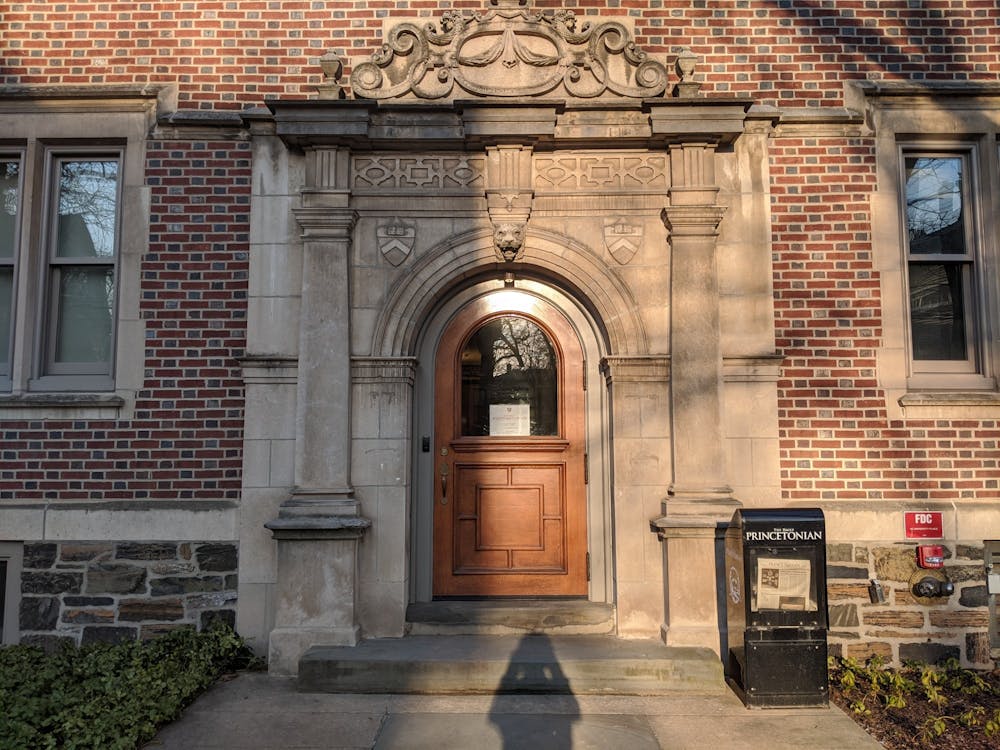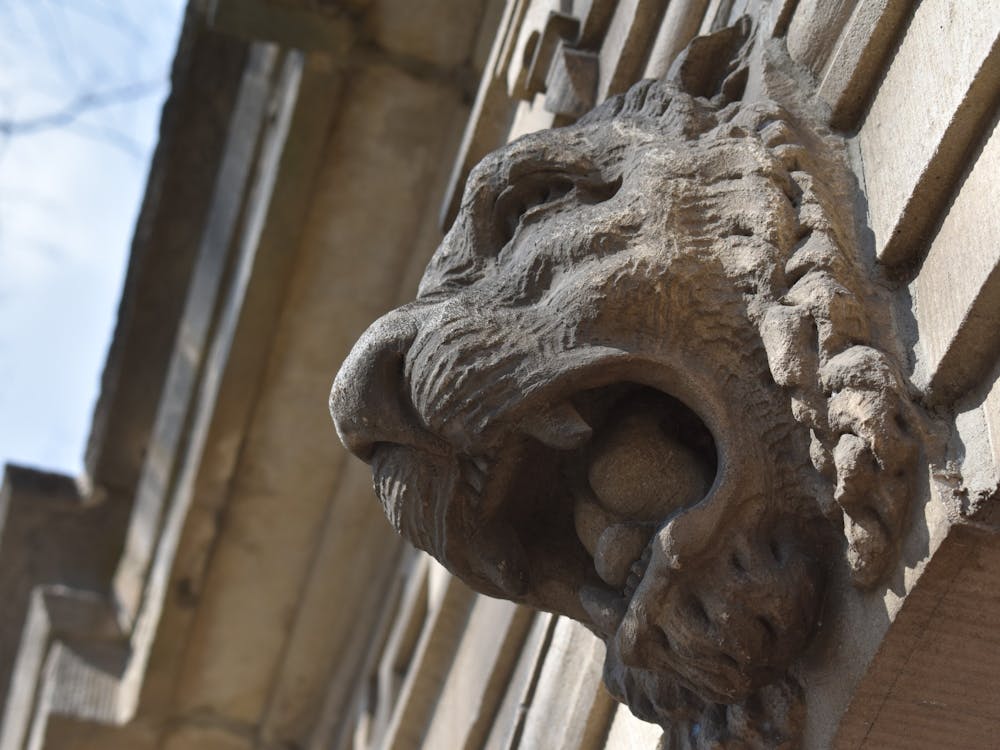The Daily Princetonian released its 2023 Diversity, Equity, Inclusion, and Belonging (DEIB) report last week, which publicly shares internal statistics on staffers’ identities, feelings of inclusion within the ‘Prince’ community, and satisfaction with the extent of ‘Prince’ coverage. This report, which includes a multitude of analyses on the problems the ‘Prince’ faces and goals for improvement, could be read as suggesting that the utmost priority of internal Diversity, Equity, and Inclusion (DEI) efforts is to increase the diversity of staffers. This would be a poor takeaway from an interesting and insightful report, and leave the paper open to common criticisms that shallow DEI programs face — that they prioritize appearances over values-driven change. Instead of becoming a directive on personnel proportions, the DEIB survey should be used to identify and resolve gaps in coverage of particular communities and areas in which internal programs exclude certain groups of individuals.
When DEI programs find themselves lambasted, critiques usually come in a rote form. The DEI effort, its detractors declare, “racially discriminates to remedy past racism,” bureaucratizes social reform to the point of rendering it meaningless, and favors insignificant qualities over “merit and qualifications.” But while some of these critiques may be well founded against particular programs or initiatives, such dismissals seem to suggest that promoting these values is an unimportant goal. Indeed, criticisms of DEI often fail to propose what an institution such as a newspaper should do when it seeks to expand areas of coverage, wield its power to support each community it serves, and improve trust — in short, increase diversity, achieve equity, and accomplish inclusion goals.
Good journalism aims to provide true information to its readers so that they may make decisions based on informed understandings of the world around them and of those in power above them. To accomplish this, reporters must make deep inquiry into a diverse portfolio of activities and strive to ensure that their work is read by all of the communities whose lives they hope to improve. Accepting the premise that the values expressed by the shorthand of DEI are essential to the mission of a newspaper, how can they be best fulfilled?
In the introduction to the DEIB report, Community Opinion Editor Christofer Robles, the chair of the 147th Board’s DEIB committee, declared that “a diverse staff is essential for publishing more informed coverage of Princeton and its many communities.” But this is not a good representation of the real goals of the report. Such a statement indicates that there is a clear cause-effect relationship in DEI practice: acquire just the right proportion of identities within the staff, and good coverage will follow. In fact, there is a far more complex interrelation of personnel makeup and journalistic goals. Reading the DEIB survey, leaders at the ‘Prince’ should be identifying gaps in coverage based on the way different identity groups are represented and feel included within the body of the internal community. Assessments of our staff must be used as a reflection of the degree to which we successfully accomplish our journalistic mission, not as a way to ensure we simply get the best identity representation — though internal diversity will hopefully continue to fluctuate as a result of these improvements in targeted coverage.
Areas of the DEIB survey indicate that the ‘Prince’ hopes to approximate the diversity of the University student body within its ranks, a goal which supplements the worst fears of DEI critics — that we’re going to count identity groups and introduce quotas to fulfill across the board. The DEIB report names “recogniz[ing] that our own staff does not reflect the diversity of the student body and correct[ing] these failures” as one of its goals to improve upon in future years.
For example, while 1.69 percent of the Princeton student body identifies as Native American/Native Alaskan or Native Hawaiian/Pacific Islander, the ‘Prince’ has no staffers who identify with this racial category (tracked as Native Hawaiian/Pacific Islander or Native American and Indigenous). Fourteen percent of the student body is registered with the Office of Disability Services, compared to 10 percent of the ‘Prince’ staff identifying as disabled. Groups that are typically considered majorities are also underrepresented within the ‘Prince.’ Forty-one percent of the Class of 2027 identifies as Christian, compared to 35.1 percent of the ‘Prince,’ and while 75.3 percent of the Class of 2027 identified as straight, only 64.9 percent of the ‘Prince’ identified similarly. But do all of these underrepresented groups need to be targeted equally?
There are many ways in which the makeup of the ‘Prince’ differs from that of the larger student population. Thus, the disparities discussed above can be resolved by recruiting more Indigenous staffers and disabled staffers along with more white and Christian staffers. Yet good journalism doesn’t just mean reflecting the community back to itself: attempting to gather the right proportion of staff across the multitude of identities held by each individual doesn’t seem relevant to the journalistic mission. A crucial mission of a newspaper is to highlight the “ills and injustices of a society,” as the World Economic Forum notes. This will not be accomplished through reporting upon the aggregate concerns of the community, serving each identity grouping in proportion to its existence.
But if this isn’t a numbers game, what is the end goal of the diversity efforts of the ‘Prince’? Will it ever be diverse enough?

I spoke to Robles, who said that he doesn’t think that “trying to establish a proportion or a number is an effective way of looking at diversity.”
Rather, he stresses that diversity is multifaceted, and prefers to consider the “representation of everyone” as a goal for the paper, which is, he says, “why we consider numbers in the first place.”
Taking this view of DEI, Robles highlights that “inclusion is a really good metric for what diversity should look like.”
“Within the ‘Prince’ the groups of identities that are proportionally less represented compared to those other identities within the ‘Prince’ are generally the people who are feeling less included or who feel less confident in our coverage,” he concluded.

In Robles’ framing, rather than count the number of staffers of each race and religion and sexuality, the ‘Prince’ should ensure that it hits two related goals: there should be staffers representing each identity category relevant to the events and communities the ‘Prince’ covers, and no staffer should be the only representative of their identity. According to studies on effective journalism, such a goal aligns with the ultimate reason a newspaper considers diversity in the first place, which is to ensure that “the news fairly represents the lives, interests and concerns of everyone.” Unfortunately, it’s far from easy to accomplish: not only would creating a master list of relevant identities a newspaper staff must include be problematic for countless reasons, the ‘Prince,’ as Robles notes, “is not explicit in recruiting people of certain identities, as far as I’m aware.” In other words, since the ‘Prince’ currently does not consider the identity-affiliation of applicants, fulfilling this goal would be impossible under current recruitment tactics.
These make Robles’ identification of inclusion as a measure of diversity so crucial. Instead of counting staffers to consider the surface level diversity of the individuals within the ‘Prince,’ the paper can consider the presence of identities within the community as a reflection of the diversity that’s far more relevant — that of the reporting. Tracking the identities of staffers — in addition to their feelings of belonging to and satisfaction with the ‘Prince’ — can count as a measure of the degree to which various communities feel, or are, included in the work of the ‘Prince,’ both by who’s in it and who’s making it.
In short, the big takeaway of the DEIB survey should be analyzing absence of identity groups to make changes in coverage and leadership priorities, not directly in personnel. With this understanding, rather than trying to recruit more Christian staffers to resolve the fact that they are proportionally underrepresented, for example, the ‘Prince’ should aim to cover the Christian community on campus more intently, and with greater attention on the disparate individuals within.
What are some of the biggest problem areas, then? The analysis within the survey already notes that first-generation low-income students often feel “uncomfortable joining and engaging with the ‘Prince’” and marks resolving this a priority in the goals section. That there are no Sikh or Native staffers is also an area of concern, as noted by the survey, suggesting a need to increase coverage efforts here.
But I am also particularly concerned by what the survey reveals about internal bias against certain groups, reflected by changes in the makeup of the community at the staff versus the editor level. While 16.1 percent of staffers identify as politically moderate and 3.3 percent as slightly right wing, only 7.8 percent of editors are moderate and two percent slightly right wing, suggesting either a large internal bias towards left-wing individuals, or a concerning lack of support given to moderate/right wing staffers to advance in the ‘Prince’ hierarchy. While 40.7 percent of staffers identify as Asian, only 19.6 percent of editors are Asian, raising similar questions about the potential lack of internal support given to Asian staffers. It is essential that the ‘Prince’ leaders include these worrying trends in their decision-making about which communities are prioritized within our coverage.
Efforts to support DEI at the ‘Prince’ are not noble because they serve the goal of DEI: they are good because they serve the broader goal of bettering the Princeton community by covering it holistically, inclusively, and incisively. The DEIB report is an important tool in accomplishing our journalistic aims, but only if it is wielded appropriately. Our personnel statistics should be used to inform our coverage decisions, the advancement of which is our primary aim. We can predict and hope that internal statistics will change according to the inquiry into a wide variety of individuals and organizations, but this must always remain a secondary goal. Accomplishing DEI efforts must remain in service of a larger virtue, and not become ends themselves.
Abigail Rabieh is a junior in the history department from Cambridge, Mass. She is the public editor at the ‘Prince,’ and writes to address issues of journalistic quality and ethics.
If you have questions or concerns regarding the paper’s coverage and standards, or would like to see her cover a particular issue, please contact publiceditor [at] dailyprincetonian.com.








